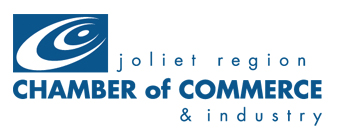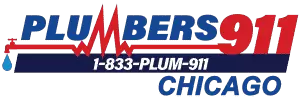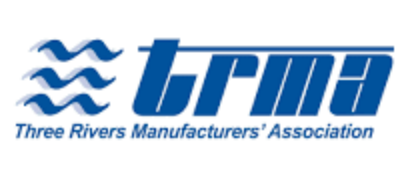
How Do Schools Save Energy, Conserve Water and Fund Projects?
School energy saving tips and water saving can help America’s nearly 140,000 public, private and charter K-12 schools. Environmental Protection Agency (EPA) estimates that 30% of the energy used is unnecessary or inefficient.
“Energy costs are second only to personnel costs as the leading draw on K-12 school district operating budgets, totaling approximately $8 billion annually nationwide. (U.S. EPA, 2008; U.S. DOE, Undated) An estimated $2 billion of that total can be saved by improving energy efficiency in K-12 schools…”
For each kilowatt-hour (kWh) you save by using energy-efficient technologies, you are reducing the emissions of carbon dioxide, sulfur dioxide (key component of acid rain), and nitrogen oxides (responsible for smog).
“The EPA promotes a strategy that starts with top leadership, engages appropriate employees inside and outside the organization, uses standardized measurement tools to prioritize efficiency investments, track continuous improvement, and recognizes results.” See EPA’s Energy Efficiency Programs in K-12 Schools: A Guide to Developing and Implementing Greenhouse Gas Reduction Programs.
School Energy Saving Tips.
- Create a policy for your school energy savings.
- Educate your team to improve operational efficiency that pays higher dividends.
- Consider developing a maintenance mission statement and plan of equipment operation, history, maintenance, costs.
- Create Web dashboards to educate everyone and offer tips and rewards for wise behaviors.
- Involve others outside your school for energy saving help.
- Regular maintenance is the best way to minimize service calls, eliminate surprises, and control your total cost of operation. Consider quarterly equipment maintenance planning. Maintenance programs can be reactive (wait till it breaks), preventive (time scheduled) and predictive (basing maintenance need on the actual condition of the machine).
- Federal Energy Management Program. Properly maintained equipment is safer. Improve the comfort and health of building occupants with regular equipment maintenance that supports a healthy indoor environment. Confirm the designed life expectancy of equipment is achieved.
- Monitor key HVAC points like chilled water temperature, hot water temperature, discharge air temperatures, and fan CFM. Setting these values to the minimum levels required for comfort will save energy and reduce stress on mechanical systems.
- Eliminate equipment shakes, rattles. Excessive vibration is costing you money.
- New high efficiency, boilers, gas furnace, chiller, cooling tower or rooftop package system can lower operating costs up to 30 percent.
- Chillers – Combine in multiple buildings – run efficient ones first. Isolate off-line chillers and cooling towers to lower energy usage.
- Cooling tower. There are numerous ways for the system to waste water when the system is not properly maintained.
- Shut off water-cooled air conditioning units when not needed, or replace water-cooled equipment with air-cooled systems.
- Many cooling towers operate below the suggested levels of total dissolved solids (TDS) unnecessarily. Adjust boiler and cooling tower blowdown rate to maintain TDS at levels recommended by manufacturers’ specifications.
- Add thermostats. Install or adjust programmable duct zoning to control heat-cool temps when rooms are empty.
- Match HVAC and lighting to occupancy. Install controls that enable systems to provide light, heat and cooling to rooms only when they are occupied to improve school energy saving.
- Night pre-cooling involves the circulation of cool air within a building during the nighttime hours with the intent of cooling the structure when utility costs are lower. The cooled structure is then able to serve as a heat sink during the daytime hours, reducing the mechanical cooling required.
- Heat recovery allows you to pre-heat air or water meaning the heating system needs to use less energy.
- Pumps in most HVAC systems are oversized. Adjust impellor to proper size for energy savings.
- Daylight can supplement artificial light while improving productivity. Smart lighting systems use occupancy, time of day and light sensors to control dimmable fixtures and coordinate with automated shade systems.
- Insulate air ducts in unconditioned space – energy gain of 10% to 30%.
- Plugging air leaks – According to the EPA and Energy Star, save up to 10 percent on utility bills just by plugging building, door, window air leaks.
- Ground source Geothermal heat pumps – energy efficient technologies for providing heating and cooling.
6 Ways to Conserve Water.
City water rates have risen by 100 to 500 percent in the last decade and are likely to keep rising according to The U.S Dept. of Energy. Try these water conservation tips to help support your sustainability goals.
1. Make school water saving a policy.
- Educate your team to improve operational efficiency that pays higher dividends.
- Create Web dashboards to educate everyone and offer tips and rewards for wise behaviors.
2. Measure water usage and waste, fix leaks, maintain equipment.
- Add controls to regulate and monitor water usage.
- Improve operating practices and keep plumbing system efficient and leak-free. A slow faucet or toilet leak can waste hundreds of gallons of water a month.
3. Efficient plumbing products.
- Lower water use up to 15% with water saving toilets, urinals, faucets, showers.
- Energy Star dishwashers are on average 40 percent more energy efficient and 40 percent more water-efficient than standard models.
- Faucet aerators can reduce water consumption by 25%.
- Low flow shower heads reduces your water waste up to 60%. Installing showerheads with flow rates below 2.5 GPM is not recommended until thermostatic mixing valve requirements are amended to lower flows. Choose replacement showerheads that are tamper proof.
- Kitchen: An average of 5% of the water used in schools is used in the kitchen areas.
- Presoak utensils and dishes in basins of water, rather than in running water.
- Turn off the continuous flow used to wash the drain trays of the coffee/milk/soda beverage island. Clean thoroughly as needed.
- Turn off food preparation faucets that are not in use. Consider installing foot triggers.
- New efficient 1.6 GPM pre-rinse spray valves used to rinse dishes before placed in the dishwasher and save hundreds of gallons per day.
- Consider using water-efficient ice machines.
- Where water pressure is higher than 60 psi, install pressure-reducing valves to save.
4. Hot water savings.
- Old water heater can waste 27% in energy and provide less hot water due to sediment buildup. Annual water heater maintenance is important.
- Heat water using recovered heat and solar thermal systems.
- Instantaneous hot water heaters – tankless water heaters are a good choice for the right application.
- Water heater insulation and hot water piping.
5. Toilet & urinal. EPA says 20-40% of all toilets leak!
It is reasonable to assume an average of 2 to 4 flushes per student per school day. That can mean 500 flushes per year per student. To retain water savings, building maintenance staff must be trained to use the proper parts when servicing the flush valves. Unfortunately, 3.5 Gallons Per Flush parts often fit the new 1.6 GPF flush valves. Read K-12 Water Use.
- Leaky toilet can waste thousands of gallons a year.
- Check for toilet leaks. Add food color to the toilet tank and wait 30 minutes. Then check the toilet bowl to see if coloring appears. If so, your toilet leaks. Flush the toilet promptly to make sure tank is not stained.
- Toilet & urinal water saving ideas.
- Installing toilet tank water displacement devices, such as toilet dams, bags, or weighted bottles.
- Retrofitting flushometer (tank-less) toilets with water-savings diaphragms, which save one gallon (20%) per flush.
- Replacing toilets with low-volume models. Toilets can use as much as 4.5 gallons per flush, while low-volume toilets use only 1.6 gallons per flush. An average savings of about 14% of the total water use in schools was possible through this one water conservation action.
- Setting urinals with programmable automatic flush valves to a water saving mode that flushes the urinal after more than one use.
- Replacing urinals with low-volume models. Urinals can use as much as 5 gallons per flush, while low-volume urinals use only 1 gallon per flush.
6. Outdoors. Rainwater harvesting.
One inch of rain on a 1,000SF roof yields 600 gallons of water. This is no longer just a residential option—industry and business leaders have begun to reclaim otherwise wasted water. For example, the headquarters of Panduit, based in Tinley Park, IL, has a water reclamation system that collects rainwater for non-potable uses; the system is projected to save the building 910,000 gallons of water annually.
Adopt water-smart landscaping, from using the proper plants to using in-ground sensors to trigger watering only when truly necessary. Consider using drought-tolerant, low-maintenance plants.
Funding Retrofit School Energy Saving & Water Saving Projects – Stage Over Time.
To pay for energy efficiency upgrades you can access new funds through loans, bonds, energy performance contracts, lease-purchase agreements, and grants. Create a to do list and stage energy saving projects over a number of years.
The Energy Efficiency Grants are a dollar for dollar state matching grant program providing up to $250,000 for energy efficiency projects in schools. The grants can be used for insulation, windows, doors, energy controls, lighting, energy recovery, energy conservation, alternative energy systems and other projects designed to reduce energy consumption.
Whether you’re a private or public entity, you may qualify for grants or low-interest loans for water conservation projects under state-sponsored initiatives. Performance contracting is another way to fund efficiency projects with no up-front investment. The most rewarding energy performance contracts combine water and energy-saving projects.
- Nicor Gas rebates. Conduct a free assessment of your building to understand your facility’s needs and identify energy efficiency opportunities.
- ComEd Energy Efficiency Program offers incentives for energy-saving LEDs, including fixture replacements and retrofits, networked lighting sensors and controls.
- ENERGY STAR Cash Flow Opportunity Calculator to help make decisions about the most effective timing of energy-efficient product purchases.
- Database of State Incentives for Renewables and Efficiency.
Got School Energy Saving Questions? PDM Has Answers.
Ask PDM Plumbing, Heating, Cooling Since 1885 for a free consultation in Joliet SW Chicago suburbs. We understand schools and can help you with quality maintenance program for top-notch performance. Contact PDM Plumbing, Heating, Cooling online. or call 815-207-4111.






